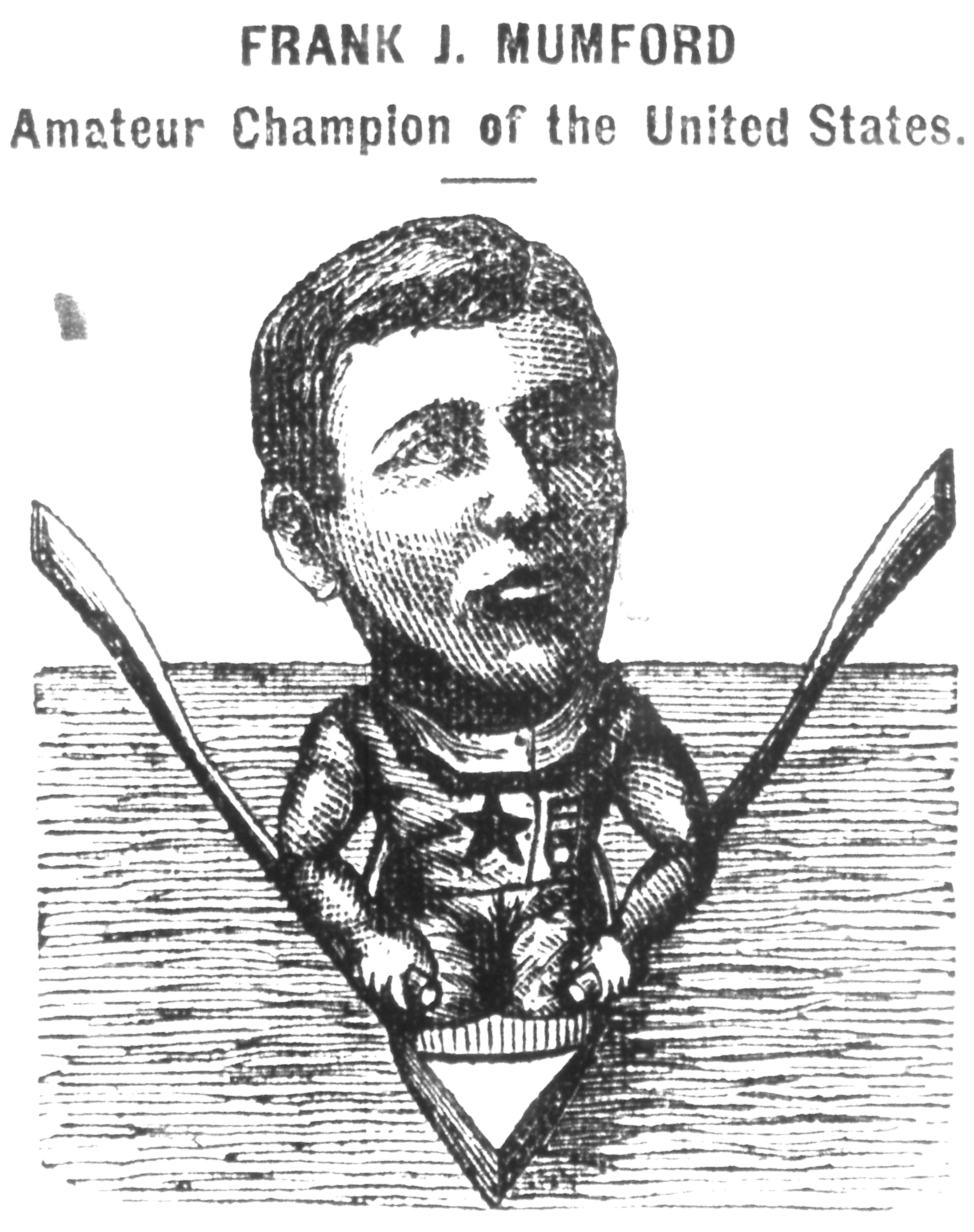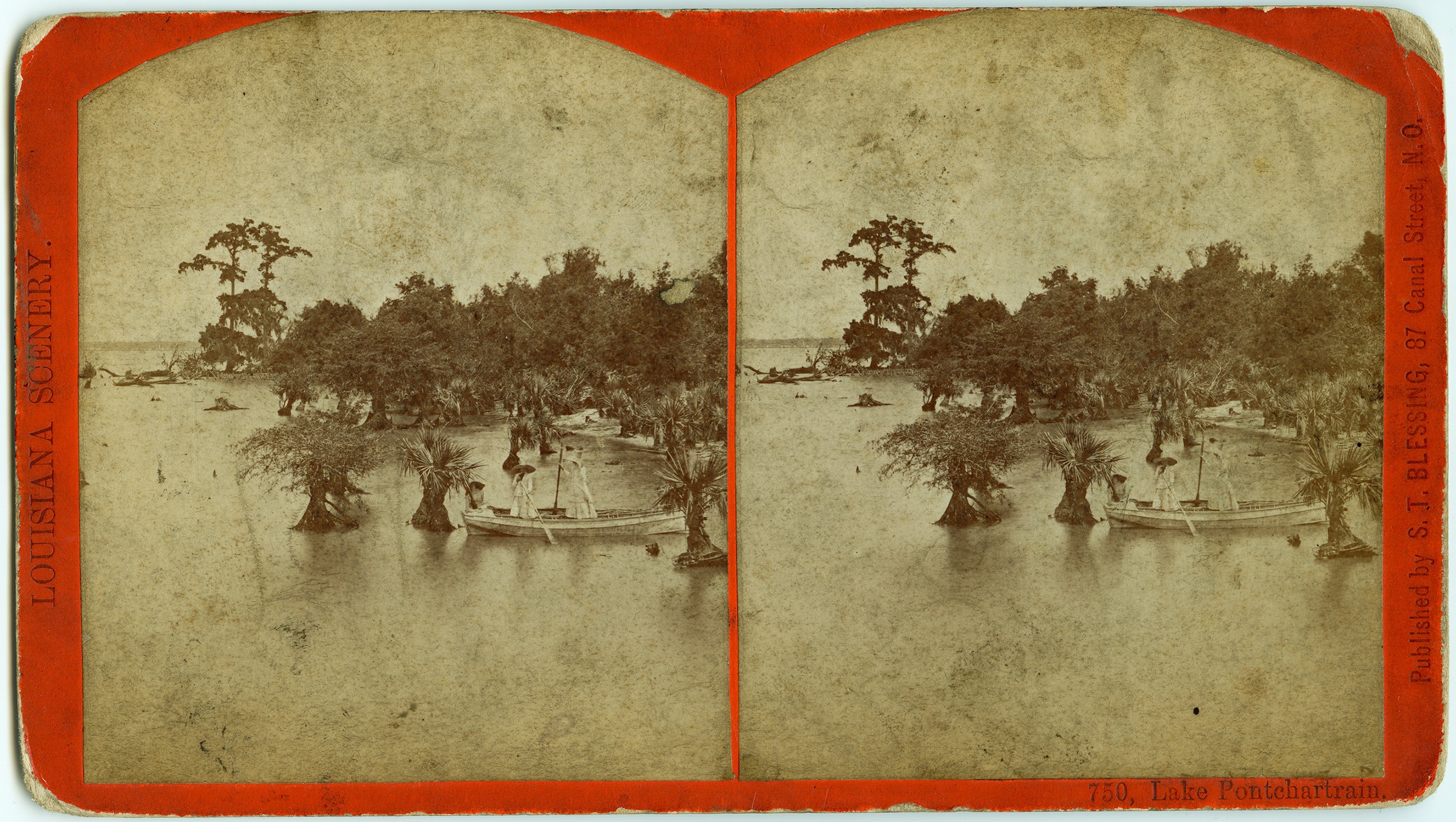
Following the Civil War, rowing became one of the country’s most popular sports, and oarsmen were some of the nation’s most recognizable athletes. More than 30 rowing clubs were established in New Orleans alone during the postwar decades. The New Orleans Rowing Club was established in 1873 by employees of local cotton presses, and other clubs were formed by employees of local metal foundries and New Orleans firemen.The clubs competed against one another in interclub regattas. Large national rowing regattas were held throughout the country and drew large crowds. In New Orleans, national regattas were held in 1875, 1880, and 1885 and attracted oarsmen from as far away as New York, Illinois, Michigan, and Iowa. For the 1885 event, the St. John Rowing Club constructed a grandstand at West End that could seat 5,000 spectators.
The sport provided Americans—young white men, in particular—a healthy pastime as the country distanced itself from sectional conflict, a benefit emphasized by the organizers of these regattas. At the awards ceremony for a regatta held in New Orleans in 1880, Louisiana Speaker of the House R. N. Ogden stated, “These are the contests we desire, contests of manly skill, and prowess, embittered by no sectional prejudice, inflamed by no political animosity, contests of brotherly love, where the best man wins.” In the same speech, Ogden noted that the athletes’ “sinewy forms and muscular physiques speak of the hardy race whose sons they are,” a not-so-veiled nod to the white supremacist attitudes of the time.
In 1879, a 23-year-old New Orleans fireman named Frank Mumford, a member of the Perseverance Rowing Club, was crowned the nation’s greatest rower by the National Association of Amateur Oarsmen. The woodcut below was featured in an 1880 article about Mumford by Lafcadio Hearn, who wrote that the young rower “is slightly built, but well proportioned, and possesses considerable strength,” and had a “long” and “graceful” stroke that gave him an efficiency advantage. He defeated all the best that clubs of the Northeast could pit against him, but in 1884 he was barred from the sport for allegedly throwing a race in Washington, DC. He claimed that a problem with his boat caused the suspicious defeat, but a previous suspension likely didn’t help his case. Mumford became a mentor and coach to a generation of New Orleans oarsmen, but he had to wait until 1898 for a thorough investigation to finally clear his name. He died in 1900 at the age of 44.
Education Resources
The Wonderful, Wacky Words of Rowing

Members of the St. John Rowing Club on Bayou St. John
1903; gelatin silver print
by Lindley Stoner Crowder, photographer
The Historic New Orleans Collection, gift of Charles K. Messmer, 1995.99.13

Frank J. Mumford caricature
from the New Orleans Item, May 29, 1880
The Historic New Orleans Collection, 83-6-L.16.1

Women rowing on Lake Ponchartrain
ca. 1880; albumen stereograph print
by Samuel T. Blessing Studio, photographers
The Historic New Orleans Collection, 1979.221.19
